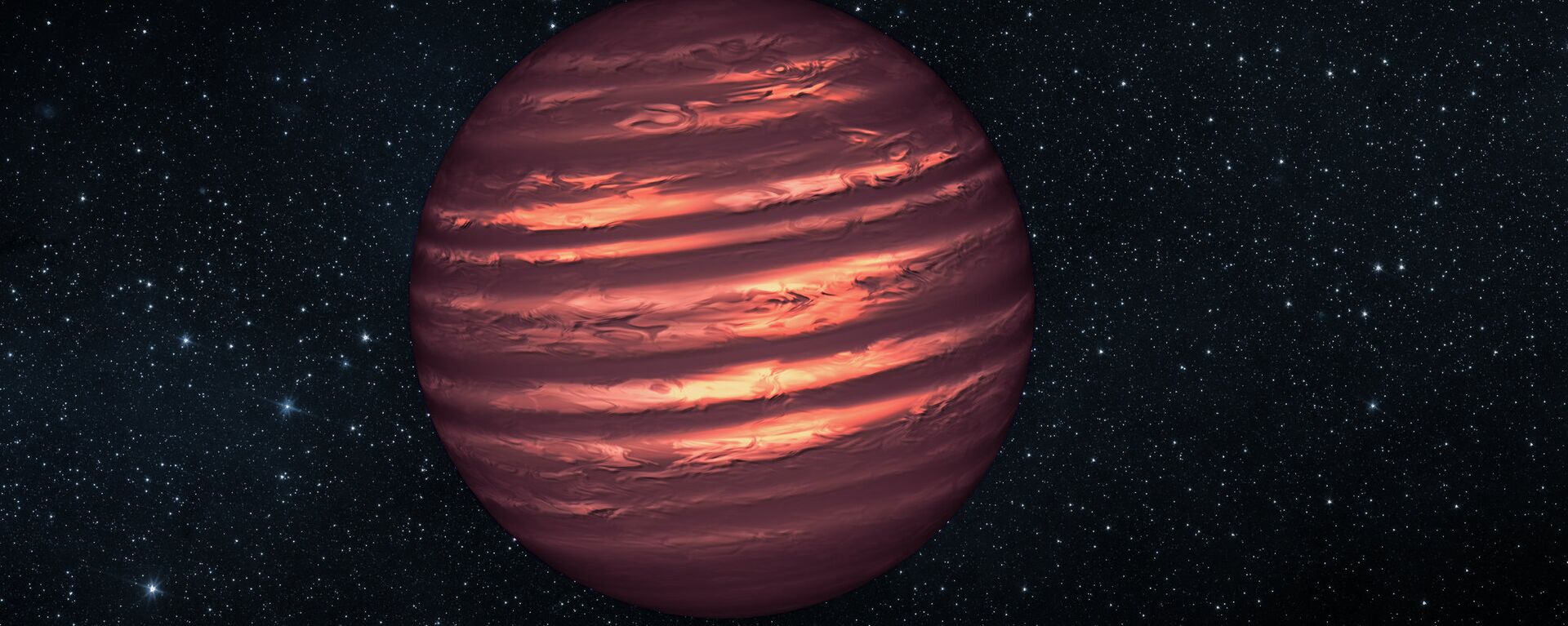https://sputnikglobe.com/20230612/astronomers-spot-two-tatooine-like-exoplanets-orbiting-twin-suns-1111096308.html
Astronomers Spot Two ‘Tatooine-Like’ Exoplanets Orbiting Twin Suns
Astronomers Spot Two ‘Tatooine-Like’ Exoplanets Orbiting Twin Suns
Sputnik International
In a new report that seems like it should’ve come from a galaxy far, far, away, astronomers have spotted a multi-planet system in which the exoplanets orbit two stars instead of one. It’s only the second such discovery yet made.
2023-06-12T21:29+0000
2023-06-12T21:29+0000
2023-06-12T21:29+0000
beyond politics
university of birmingham
exoplanets
binary stars
star wars
astronomy
https://cdn1.img.sputnikglobe.com/img/104375/79/1043757976_18:0:1414:785_1920x0_80_0_0_77a4b6cd33730ce93838f2af7d0fadd8.jpg
The astronomy team, working from the University of Birmingham in the United Kingdom, published their findings in Nature Astronomy on Monday.The exoplanet is located in the binary star system TOI-1338, about 1,320 light-years from Earth in the constellation Pictor. However, they have given it an additional designation: the BEBOP-1 system, with BEBOP standing for Binaries Escorted By Orbiting Planets, and the new exoplanet being BEBOP-1c.As it happens, the crew discovered the exoplanet by accident. They were using two Chilean telescopes, the European Southern Observatory and the Very Large Telescope, to try and pinpoint the mass of TOI-1338b, a gas giant about 22 times the mass of the Earth with a size roughly that of Saturn. They were using a method that watches the star very closely and measures how much the exoplanet pulls on it as it orbits, which causes the star to wobble a bit.Instead, they saw TOI-1138c transit, or pass in front of, the star twice.Despite being described by the astronomers as “Tatooine-like,” the exoplanet doesn’t much resemble the sandy, desert-wrapped home of Luke Skywalker in the "Star Wars" science fiction series. BEBOP-1c is a gas giant about 65 times the mass of the Earth, or about one-fifth the mass of Jupiter. It orbits about 79% of the distance from the Earth to our sun, taking about 215 Earth days to complete a year.Planets that orbit binary star systems, which astronomers call “circumbinary,” were long held to be impossible in reality, in spite of their appearances in science fiction."This all changed with the discovery of Kepler-16b in 2011 by the Kepler space telescope. This discovery showed that it must be possible for these planets to form,” he added. That system, located about 5,000 light-years away, has a Saturn-sized planet that whips around the twin suns every 41 days.However, the new discovery is especially remarkable because it is only the second binary system found to have multiple planets, with the other being Kepler 47, located about 3,420 light-years away, where three planets orbit two small stars, one yellow and one red.
https://sputnikglobe.com/20230530/up-to-one-third-of-planets-in-small-stars-goldilocks-zones-could-be-habitable-1110801847.html
Sputnik International
feedback@sputniknews.com
+74956456601
MIA „Rossiya Segodnya“
2023
News
en_EN
Sputnik International
feedback@sputniknews.com
+74956456601
MIA „Rossiya Segodnya“
Sputnik International
feedback@sputniknews.com
+74956456601
MIA „Rossiya Segodnya“
binary star; exoplanet; tatooine; birmingham; astronomy
binary star; exoplanet; tatooine; birmingham; astronomy
Astronomers Spot Two ‘Tatooine-Like’ Exoplanets Orbiting Twin Suns
In a new report that seems like it should’ve come from a galaxy far, far, away, astronomers here on Earth have spotted a multi-planet system in which the exoplanets orbit two stars instead of one. It’s only the second such discovery yet made.
The astronomy team, working from the University of Birmingham in the United Kingdom,
published their findings in Nature Astronomy on Monday.
The exoplanet is located in the binary star system TOI-1338, about 1,320 light-years from Earth in the constellation Pictor. However, they have given it an additional designation: the BEBOP-1 system, with BEBOP standing for Binaries Escorted By Orbiting Planets, and the new exoplanet being BEBOP-1c.
As it happens, the crew discovered the exoplanet by accident. They were using two Chilean telescopes, the European Southern Observatory and the Very Large Telescope, to try and pinpoint the mass of TOI-1338b, a gas giant about 22 times the mass of the Earth with a size roughly that of Saturn. They were using a method that watches the star very closely and measures how much the exoplanet pulls on it as it orbits, which causes the star to wobble a bit.
Instead, they saw TOI-1138c transit, or pass in front of, the star twice.
Despite being described by the astronomers as “Tatooine-like,” the exoplanet doesn’t much resemble the
sandy, desert-wrapped home of Luke Skywalker in the "Star Wars" science fiction series. BEBOP-1c is a gas giant about 65 times the mass of the Earth, or about one-fifth the mass of Jupiter. It orbits about 79% of the distance from the Earth to our sun, taking about 215 Earth days to complete a year.
Planets that orbit binary star systems, which astronomers call “circumbinary,” were long held to be impossible in reality, in spite of their appearances in science fiction.
"Circumbinary planets were originally thought not to exist, since the binary stars stir up the planet-forming disks, creating a harsh environment for planets to form," explained study lead author Matthew Standing, an astrophysicist at the Open University in England and lead author of the study.
"This all changed with the discovery of Kepler-16b in 2011 by the Kepler space telescope. This discovery showed that it must be possible for these planets to form,” he added. That system, located about 5,000 light-years away, has a Saturn-sized planet that whips around the twin suns every 41 days.
"With only 15 of these circumbinary planets known out of the over 5,200 total exoplanets discovered so far, it is exhilarating to be a part of this emerging branch of exoplanet science," Standing said. "Our preliminary results show that circumbinary planets seem to exist as frequently as planets around single stars like our sun."
However, the new discovery is especially remarkable because it is only the second binary system found to have multiple planets, with the other being Kepler 47, located about 3,420 light-years away, where three planets orbit two small stars, one yellow and one red.



